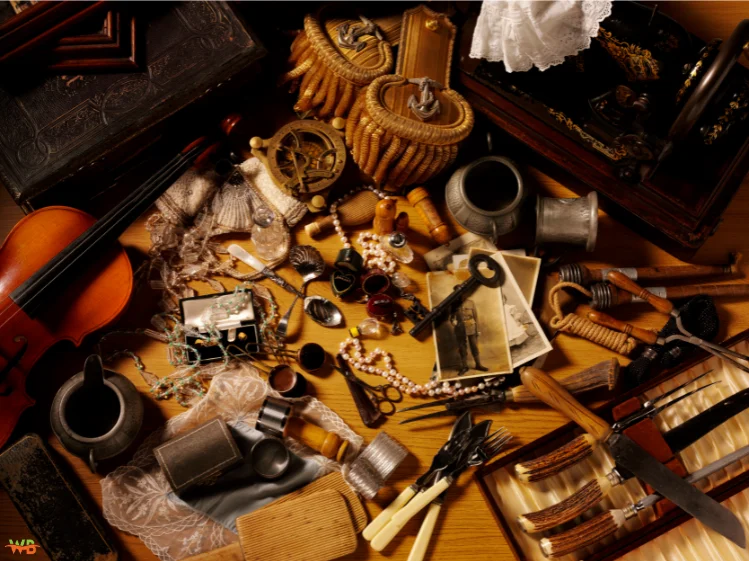Vintage photographs have a timeless charm, and a significant part of their appeal lies in the rich, warm brown pigment often seen in these images. This brown pigment in vintage photos isn’t merely a hue; it serves as a glimpse into history, revealing the methods and stories behind early photography. In this article, we’ll delve into the origins of this pigment, its aesthetic and emotional impact, and how you can achieve and preserve these beautiful tones. We’ll also explore modern trends and DIY methods for creating vintage-style photos, along with tips for collectors and restorers.
Early Brown Pigment in Antique Photographs
The use of brown pigment in vintage photos has its roots in the early days of photography.
Historical Use of Sepia Toning
One of the most iconic techniques used to achieve brown hues in photographs is sepia toning. This process, introduced in the 19th century, replaced the metallic silver in photographs with a silver compound that produced a brown or reddish-brown tint.
How Sepia Toning Works
Sepia toning involves immersing a developed black-and-white photo in a solution containing sepia dye. This chemical reaction replaces the silver in the image with the brown pigment in vintage photos, resulting in the characteristic warm brown tone. The process not only enhanced the aesthetic quality of the photos but also improved their longevity, as sepia compounds were more stable than silver.
Aesthetic & Emotional Impact of Brown Pigment in Photos
The warm brown hues of vintage photographs do more than just provide a historical context—they evoke specific emotional responses.
Visual Charm of Brown Pigment in Vintage Photos
Brown pigment in vintage photos creates a soft, warm effect that contrasts with the starkness of black-and-white images. This warmth can give the subjects a more lifelike and inviting appearance. The subtle variations in brown tones add depth and texture, transforming simple snapshots into cherished, nostalgic images.
Emotional Connection
The brown pigment in vintage photos often evokes feelings of nostalgia and sentimentality. They transport viewers back to a different time, offering a glimpse into the past that feels both personal and historical. This emotional connection is a significant reason why brown pigment in vintage photos continues to captivate audiences today.
Techniques for Achieving and Preserving Brown Tones
Creating and maintaining the rich brown tones in vintage photos involves understanding the techniques used in early photography and applying modern methods for preservation.
Traditional Techniques
To achieve the iconic brown tones, early photographers used a range of chemicals and materials. The precise application of sepia toning, which was crucial for achieving the distinct brown pigment in vintage photos, required skill and timing. Techniques included adjusting exposure times, using specific types of photographic paper, and carefully preparing the toning solutions.
Modern Revival Trends
In recent years, there has been a resurgence of interest in vintage photography styles, particularly focusing on the use of brown pigment in vintage photos. Contemporary photographers and artists are experimenting with sepia tones and other vintage effects to recreate the classic look of old photographs. Digital tools and software like Adobe Photoshop and Lightroom now simplify the process of adding sepia filters and other vintage effects to contemporary images, allowing you to replicate the brown pigment characteristic of vintage photos.
DIY Vintage Photo Techniques: Achieving Brown Pigment in Vintage Photos
If you’re eager to create your own vintage-style photos, several DIY methods can help you achieve the desired brown tones.
Step-by-Step Guide to Creating Vintage Photos
- Start with a Black-and-White Photo: Convert your digital photo to black-and-white using photo editing software.
- Apply Sepia Filter: Use the sepia filter in your photo editing software to add the characteristic brown tones.
- Adjust Color Balance: Fine-tune the color balance to achieve the desired warmth and depth.
- Add Texture: For an authentic vintage look, consider adding texture or grain to your photo. This can be done using editing tools or by overlaying textures.
Tools and Materials Needed
You don’t need expensive equipment to start creating vintage-style images featuring brown pigment in vintage photos. A basic digital camera or smartphone, along with photo editing software, can help you achieve stunning results. Experiment with different filters and settings to find the look that best suits your vision.
Challenges of Preserving and Restoring Vintage Photos
Maintaining vintage photos, particularly those with brown pigments involves distinct challenges.
Factors Causing Pigment Deterioration
Over time, exposure to light, humidity, and air pollutants can cause the pigments in vintage photos to fade. The chemicals used in early photographic processes can degrade, leading to the loss of color and detail.
Contemporary Methods for Preserving Brown Pigment in Antique Photos
To combat these issues, modern conservators use advanced techniques for preserving brown pigment in vintage photos. These include climate-controlled storage, digital restoration, and archival-quality materials. Proper storage in a dark, cool, and dry environment, along with using UV-protective glass when displaying photos, can help preserve their colors and details.
Collecting and Restoring Vintage Photos
For collectors, vintage photos with brown pigments are highly sought after due to their historical value and aesthetic appeal.
Tips for Collectors
When collecting vintage photos, look for images with well-preserved brown pigment in vintage photos and minimal fading. Ensuring authenticity is essential; therefore, check the origin of the photos and be wary of replicas. High-quality vintage photos should have sharp details and consistent tones.
Restoration Techniques
Restoring vintage photos requires a delicate balance, especially when dealing with the brown pigment in vintage photos. Techniques such as digital retouching, chemical treatments, and careful cleaning can revive old photos. The aim is to improve the image while maintaining its historical authenticity. Avoid over-restoration, which can strip away the original charm and affect the distinctive brown hues that contribute to the photo’s vintage appeal.
In Summary: The Enduring Charm of Brown Pigment in Vintage Photos
The brown pigment in vintage photos carries with it a sense of nostalgia and historical significance. By understanding its origins, aesthetic impact, and preservation techniques, you can appreciate these beautiful images even more. Whether you’re a photographer, collector, or simply an admirer of vintage art, embracing the charm of brown pigments in vintage photos offers a profound connection to the past.
If you’re inspired to create or collect vintage-style images, remember that both the history and modern techniques provide a wealth of options to explore. The enduring appeal of these photos is a testament to their ability to captivate and connect us with the stories of yesteryears.
FAQs About Brown Pigment in Vintage Photos
1. How can I distinguish between a genuine vintage photo and a modern reproduction?
- To distinguish genuine vintage photos from modern reproductions, examine the texture and quality of the paper. Authentic vintage photos often have a unique texture and may show signs of aging, such as yellowing or brittleness. You can also check for watermarks or inscriptions on the back and consult with an expert for verification.
2. Are there specific types of paper that were commonly used in vintage photography?
- Yes, vintage photographs were commonly printed on papers like albumen, collodion, and gelatin silver prints. Each type of paper has distinctive characteristics, such as albumen prints having a glossy surface, while gelatin silver prints are known for their greater image clarity and stability.
3. Can I use modern digital techniques to mimic other historical photographic processes aside from sepia toning?
- Absolutely. Modern digital tools allow you to simulate various historical photographic processes, including daguerreotypes, tintypes, and cyanotypes. Software like Adobe Photoshop offers filters and effects to recreate the look and feel of these early photographic methods.
4. What are some common mistakes to avoid when restoring vintage photos?
- Common mistakes in restoring vintage photos include over-restoring, which can erase historical details, and using inappropriate cleaning methods or chemicals that might damage the photo. Always use archival-quality materials and consult with a professional if unsure about restoration techniques.
5. How can I protect my vintage photos from environmental damage?
- To protect vintage photos from environmental damage, store them in a climate-controlled environment with low humidity and stable temperature. Use acid-free archival boxes or sleeves, and avoid exposing photos to direct sunlight or fluorescent light. For display, consider using UV-filtering glass and frames to minimize light exposure.

Ton Roobprom is an experienced writer focused on practical advice across technology, business, travel, beauty, lifestyle, and home improvements. He specializes in distilling complex subjects into clear, actionable insights to help you enhance your daily life.
Discover more from Wellbeing Junction
Subscribe to get the latest posts sent to your email.





